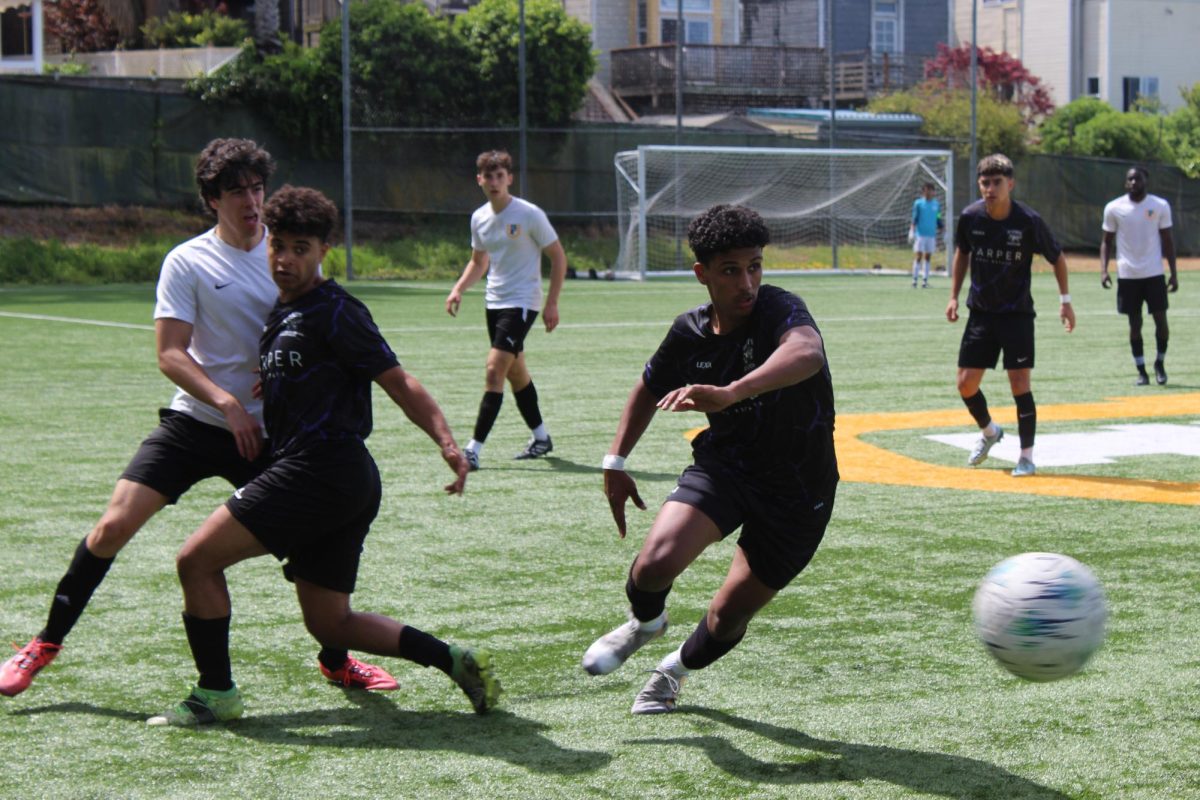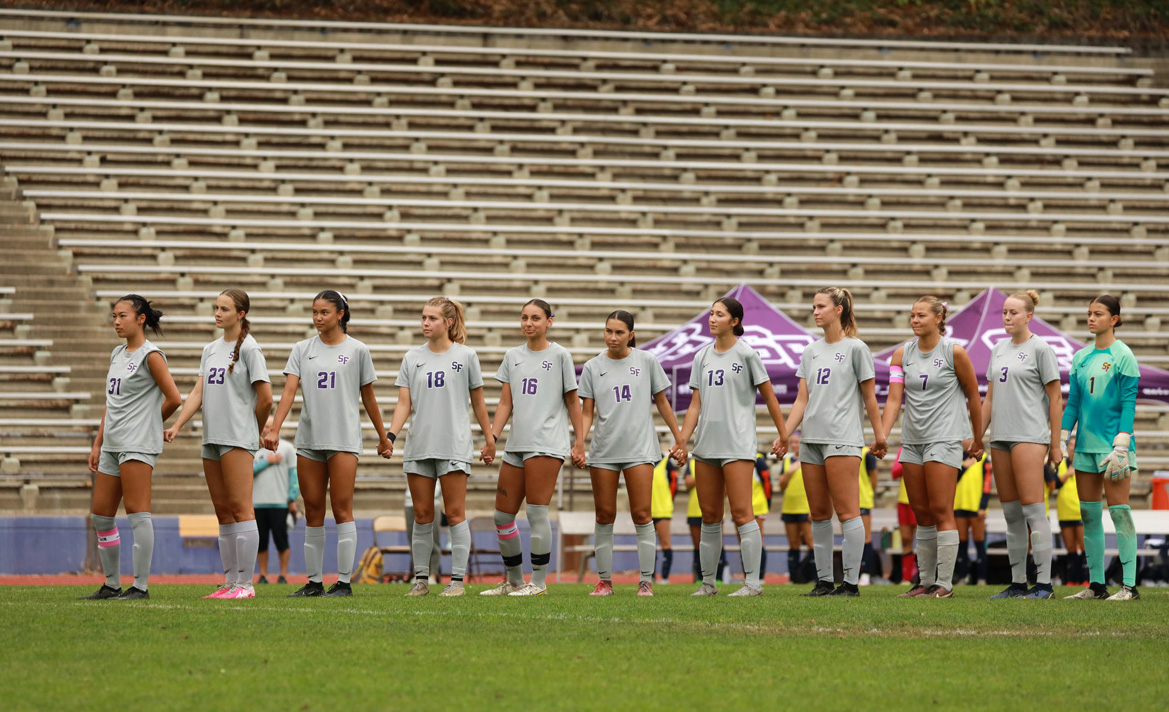
For every student athlete in the National Collegiate Athletic Association, timing is everything. Athletes have limited time and semesters to compete at the collegiate level, and each athlete aims to make an impression while competing for their school. With this in mind, timing becomes a valuable commodity for student athletes and the practice of red-shirting becomes a critical asset.
Senior high jumper Meagen Moiola is in her last year of eligibility for the SF State track and field team. Moiola is currently in her best season; she competed in the NCAA Division II Indoor Championships for the first time in her career, and earned a spot on the inaugural NCAA Division II all-West Region team. The realization that this is her last year competing for SF State has pushed her game to a higher level. However, because Moiola was not red-shirted during her freshman year, it will remain a mystery how much better she could have been next season; she isn’t graduating until spring 2013 at the earliest.
NCAA Division II grants athletes 10 semesters of eligibility to be on a collegiate team, but only four years of competition. A red-shirted season still leaves athletes with a four-year window to compete and allows them to stay on the team for an extra two non-competitive semesters. The same rules apply to transfer students; the semesters they played at their previous college count toward the 10 total semesters. It is not uncommon for athletes to be red-shirted their freshman season to provide an extra year to improve.
“Then there are people who need the time,” Moiola said. “I’m probably someone who could have used a red-shirt freshman year.”
In a perfect scenario, Moiola would have been red-shirted her freshman year and she would have been able to compete next year to build on success she accomplished this season. Unfortunately for Moiola, she came to SF State during a rebuilding period for the track and field team that heavily leaned on the freshman class. The 2008-09 season featured 16 freshmen on a roster made up of 32 athletes.
“I wish I would have red-shirted freshman year, (that) would have been awesome,” said Moiola. “I was pretty excited not to be red-shirting because it was my first year in a college sport and I didn’t think of it until this year.”
The biggest factor to why Moiola is not graduating this year is because she switched her major three times since first enrolling at SF State in 2008. She declared sociology as her major before quickly changing to health education. After taking a few courses, she realized that biology would be a better fit.
Student athletes are ensured priority registration, a privilege that helps guarantee graduation in four or five years, tying their academic and athletic careers to the same time frame.
“I always hear people talking about how hard it is to get the classes they need, but it’s an issue I’ve never had to deal with. But hopefully it won’t be a huge deal,” said Moiola about not having athlete priority registration next semester. “That’s something I’ve been nervous about. My fingers are definitely crossed.”
Just like Moiola, fellow senior and teammate Kelsey Feeley has been in the track and field program at SF State for four years. However, Feeley will be graduating this spring with a degree in history.
“We’re at an advantage being athletes because we do get priority registration every semester, which is amazing because we don’t have to be on the wait list for any classes,” said Feeley.
According to the NCAA, 73 percent of Division II student athletes graduate within six years of initial enrollment. However, the program is designed to help student athletes graduate in four years to ensure eligibility while enrolled and maintain a continuous flow of athletes.
“At some point they all have to be replaced. You don’t get to be here and compete (for) seven or eight years. That’s not the system,” said Terry Burke, women’s track and field head coach.
Athletes are pieces in the athletic program that come and go. They are substituted with each passing season after they’ve served their time and purpose. For Moiola, it would have been better for her athletic career and the program if she had better utilized her time.
Red-shirting is a choice made by individual athletes and while Moiola was not advised to prolong her competition status, she considered red-shirting after her junior year. But after three years of competition, the deadline passed without Moiola applying for the status and she continued to compete with her team.
“It’s pretty apparent that she is quite successful in this sport and doing great things for our team,” Feeley said.
Distance runner and teammate Cami Barnes was red-shirted in her freshman year and thinks the experience of being a red-shirted freshman athlete is very different from being a competing freshman.
“I think a red-shirt learns and improves more,” said Barnes. “Especially in the long run because you have this year where you’re training and doing the same workouts as your teammates, but you’re able to practice different paces at different parts of the races because you don’t have any expectations.”
Burke is well aware of how the program works, which is why he has no ill feelings for how things have turned out for Moiola. He believes that she came into SF State as a conference-level athlete based on her marks in high school.
“Most of the growth has happened last year. (Moiola) has become much more focused,” said Burke. “But I wish that most of our seniors had another year left, not just her.”
Moiola feels bittersweet about not being part of the team next year, but her academics now take precedent and she is glad to have more time for studies.
“I’m going to have a lot more time on my hands to focus on academics, which has become very important to me. But I’ll definitely miss (the team),” she said.
Moiola can’t stop to dwell on what could have been; her main focus is finishing the season strong.
“I know I probably could have done more had I gone longer,” said Moiola. “But I’m comfortable being done and I want to do the best I can to finish on a good note.”







